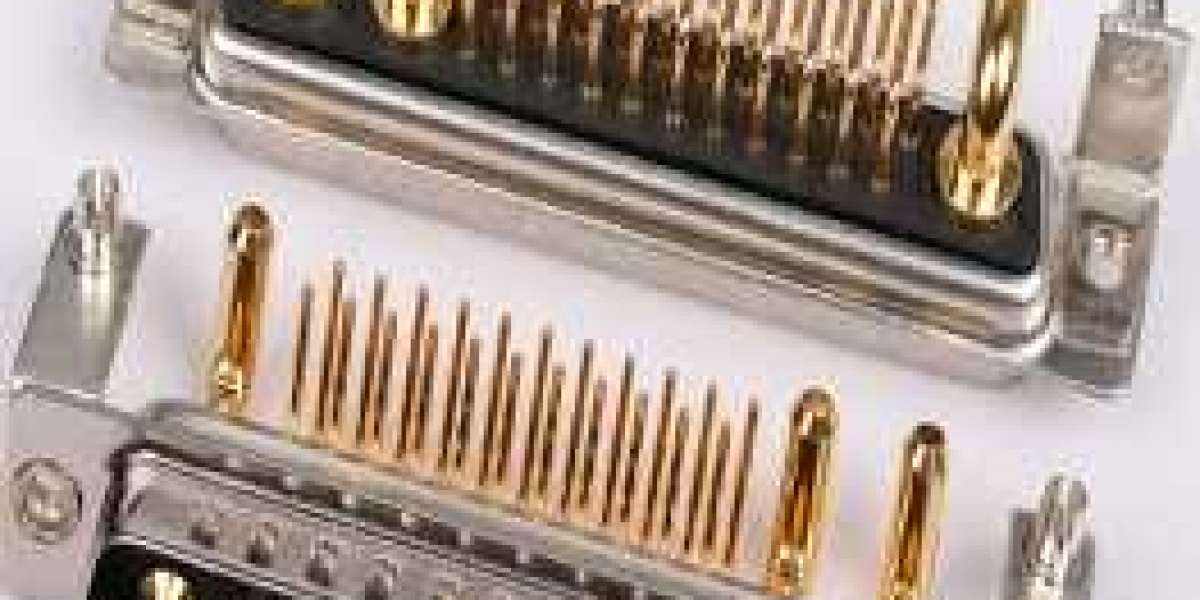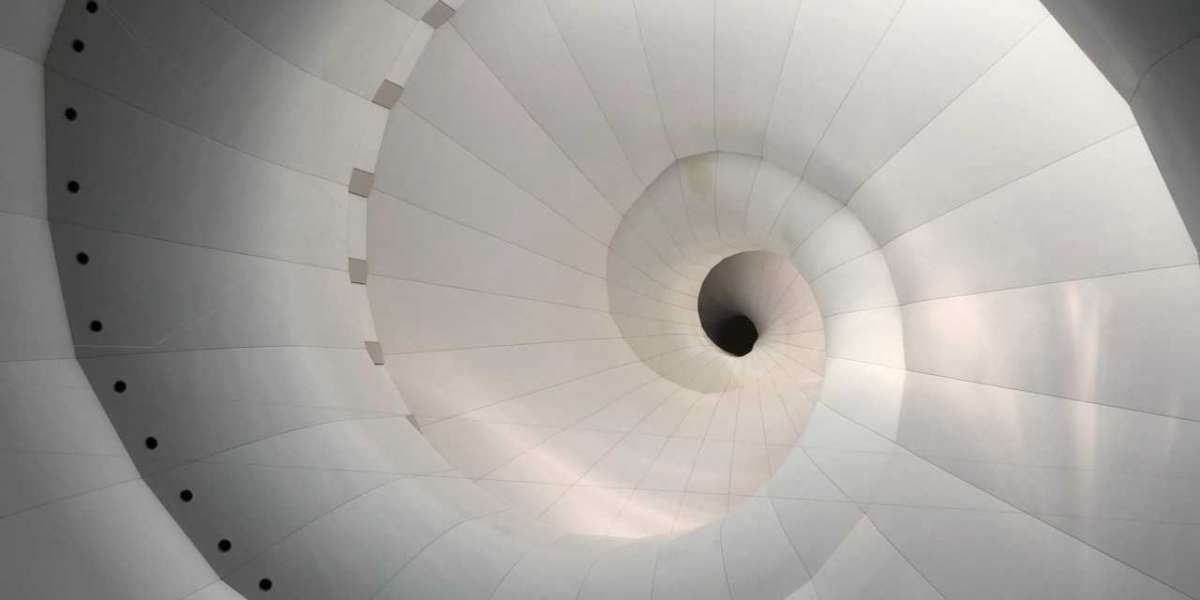What are the main types of D-Sub connectors discussed in the blog post?
How do D-Sub hybrid connectors differ from other types of D-Sub connectors?
Are there specialized maintenance requirements for D-Sub connectors mentioned in the blog post?
Can you provide an overview of the sizes and configuration options available for D-Sub connectors?
D-sub mixed connectors are versatile components that play a crucial role in various electronic devices. These connectors offer a blend of power and signal connections within a single interface, providing efficiency and space-saving benefits. With their ability to accommodate different types of signals, including high-speed data transmission and power supply, d-sub mixed connectors are widely used in industries such as telecommunications, aerospace, and industrial automation. Their durability and reliability make them ideal for demanding environments where consistent performance is essential. Stay tuned to explore the features, applications, and advantages of d-sub mixed connectors in detail.
Overview of D-Sub Connector Types
Versatile Applications
D-sub mixed connectors find applications in various industries due to their versatility and reliability. They are used in telecommunications, aerospace, military, and industrial sectors. These connectors can handle different signal types like data, power, and video.
These connectors come in various sizes ranging from 9 pins up to 50 pins or more. The most common ones include the standard DB9 (9-pin) connector for serial ports on computers and the DB25 (25-pin) connector often used for parallel printer connections.
Pin Configurations
The pin configurations of d-sub mixed connectors vary based on the application requirements. For instance, a DB15 connector might have three rows of five pins each while a DB44 could feature two rows with staggered pin layouts.
In addition to the number of pins available, these connectors also offer different gender options such as male or female versions. This allows flexibility when connecting devices together based on their specific needs.
Standard and High Density D-Sub Connectors
Pin Density Differences
D-sub mixed connectors come in two main types: standard and high density. Standard D-sub connectors, with their lower pin density, are versatile for general purposes. They are commonly used in various applications due to their reliability and compatibility.
Standard D-subs have fewer pins compared to high-density D-sub connectors, which offer more pins within the same shell size. This feature allows high-density connectors to provide increased functionality while occupying limited space efficiently.
Both standard and high-density D-sub connectors adhere to industry standards concerning pin assignments and dimensions. This ensures compatibility across different devices that utilize these connector types, promoting ease of integration and interchangeability.
Application Versatility
The versatility of standard D-sub mixed connectors makes them suitable for a wide range of uses, including computer peripherals, industrial equipment, telecommunications devices, and many more. Their widespread adoption is due to their reliable performance across various industries.
On the other hand, high-density D-sub mixed connectors find applications in scenarios where space optimization is crucial but multiple connections are required. For instance, they are commonly used in aerospace technology where compact yet multifunctional components are essential.
Combo-D and MACH-D Connectors Explained
Combo-D Connectors
Combo-D connectors are a versatile option that integrates power, signal, and coaxial contacts into one connector. This consolidation reduces the need for multiple connections, making them ideal for applications where space is limited or where efficiency is crucial. For instance, in aerospace systems where weight reduction is essential, utilizing Combo-D connectors can help streamline the design by minimizing the number of separate connections required.
Pros:
Space-saving design
Simplified connection requirements
Ideal for applications with limited space
Cons:
Potential complexity in troubleshooting if issues arise
Combo-D connectors offer a practical solution that combines various functionalities within a single compact unit. By incorporating different types of contacts into one connector shell, they provide enhanced convenience and functionality.
MACH-D Connectors
MACH-D connectors stand out due to their machined contacts that deliver superior performance in high-speed data transmission scenarios. These precision-machined contacts ensure reliable connectivity even in demanding environments where speed and accuracy are critical. For example, in telecommunications equipment requiring rapid data transfer rates or industrial machinery necessitating uninterrupted signal flow, MACH-D connectors excel at maintaining consistent performance.
Key Features:
Precision-machined contacts
Superior performance in high-speed data transmission
MACH-D connectors cater to industries that prioritize seamless communication and efficient data exchange processes. Their advanced construction enhances signal integrity and minimizes interference during high-speed transmissions.
Specialized IP67 Waterproof and Hermetic D-Sub Connectors
Protection Against Environmental Factors
IP67 waterproof D-sub connectors are specifically engineered to endure exposure to moisture and dust, making them ideal for outdoor settings or harsh conditions. These connectors offer a high level of protection against water ingress and solid particles, ensuring reliable performance even in challenging environments. For instance, these connectors can be used in applications such as marine electronics, outdoor telecommunications equipment, or industrial machinery exposed to dust.
Hermetic D-sub connectors are sealed against air and moisture infiltration. This feature guarantees that the connector maintains its integrity in demanding conditions where exposure to air or moisture could compromise performance. By preventing the entry of external elements into the connector, hermetic D-sub connectors ensure consistent functionality over time without degradation due to environmental factors.
Versatility and Reliability
The versatility of specialized D-sub connectors lies in their ability to provide solutions for various industries requiring robust connectivity options. Whether it is for military applications needing ruggedized components or medical devices demanding sterile connections, these specialized connectors offer reliability under extreme circumstances. They are suitable for use in aerospace systems where maintaining signal integrity amidst varying atmospheric pressures is crucial.
Pros:
High level of protection against water and dust.
Reliable performance in challenging environments.
Versatile application across different industries.
Cons:
May be more expensive than standard connectors.
Require specific installation considerations due to their specialized design.
Advantages of Using D-Sub Hybrid Connectors
Simplified System Integration
D-sub hybrid connectors are versatile as they can combine various contact types like power, signal, and coaxial within a single connector. This integration streamlines the system setup by reducing the number of individual connectors needed. For example, in scenarios where both power and data signals are required for a device to function efficiently, using a d-sub mixed connector eliminates the hassle of managing multiple separate connections.
Hybrid connectors not only simplify the physical aspects of connecting different components but also contribute to efficient space utilization. By consolidating multiple functionalities into one compact unit, these connectors help save valuable space in electronic devices or systems with limited room for extensive wiring setups. When dealing with complex systems that require diverse connectivity options such as power transmission alongside data transfer capabilities, d-sub hybrid connectors offer an elegant solution by accommodating all necessary connections in one place.
Cost-Effective Solution
One significant advantage of utilizing d-sub hybrid connectors is their cost-effectiveness. These connectors eliminate the need for additional adapters or converters that would otherwise be essential when using separate specialized connectors for distinct functions. By serving as a multi-functional interface within a single unit, they reduce the overall expenses associated with purchasing multiple individual connectors or accessories to achieve similar connectivity goals.
Power-D COMBO-D Connectors vs Other D-Sub Types
Power-D Connectors:
Power-D connectors are ideal for high-current applications, ensuring efficient power transmission. These connectors excel in scenarios requiring robust power capabilities, outperforming traditional D-sub types. For instance, they are commonly used in industrial equipment and machinery that demand substantial power handling.
Power-D connectors offer a reliable solution for heavy-duty applications due to their enhanced power transmission capacities. By incorporating larger contacts and improved shielding mechanisms, these connectors provide superior performance compared to standard D-sub counterparts. This makes them a preferred choice where high current-carrying capacity is crucial.
COMBO-D Connectors:
COMBO-D connectors merge both power and signal contacts within one compact design. They serve as an excellent space-saving solution for applications needing both power transmission and signal connections simultaneously. For example, these connectors are widely utilized in aerospace systems where space constraints are significant.
The integration of power and signal contacts in COMBO-D connectors enhances versatility by offering a consolidated connectivity option for various devices or systems. Their compact design streamlines the connection process while maintaining optimal performance levels across different functionalities required by the application.
Applications Across Industries for D-Sub Connectors
Versatile Usage
D-sub mixed connectors are widely utilized in various industries such as computer hardware, telecommunications, industrial automation, and aerospace. These connectors play a crucial role in ensuring secure and reliable connections across different applications. For instance, in the telecommunications industry, D-sub connectors are commonly used in data communications to transmit information efficiently.
In the industrial automation sector, these connectors are essential components for control systems. They facilitate the seamless operation of machinery by enabling communication between different parts of an automated system. Moreover, in the medical equipment field, D-sub connectors are instrumental in maintaining precise connections within medical devices to ensure accurate readings and functionality.
Military Applications
The robust nature of D-sub mixed connectors makes them ideal for military applications where durability and reliability are paramount. In military settings, these connectors are often employed in various equipment such as radar systems, communication devices, and electronic warfare systems. Their ability to withstand harsh environmental conditions and provide secure connections is crucial for mission-critical operations.
The aerospace industry heavily relies on D-sub connectors due to their high performance under extreme temperatures and vibrations. In aircraft systems like avionics controls and navigation instruments, these connectors ensure uninterrupted data transmission essential for safe flight operations.
Understanding Sizes, Variations, and Configuration Options
Different Sizes
D-sub mixed connectors are available in various sizes such as 9-pin, 15-pin, and 25-pin configurations. These different sizes cater to a range of applications across industries. For instance, the smaller 9-pin connector might be used for more compact devices where space is limited.
The larger 25-pin D-sub connectors are often employed in industrial settings or applications that require multiple connections. These connectors offer versatility due to their varying pin counts, making them suitable for diverse uses across different sectors.
Various Configurations
They can be found in different configurations including male or female options. Male connectors have pins that plug into a socket while female connectors have sockets to receive pins. This distinction allows for flexibility when connecting devices together.
Moreover, these connectors also come in straight or right-angle variations. Straight connectors are ideal for standard installations where components align directly with each other. On the other hand, right-angle options are useful when space constraints necessitate a connection at an angle rather than straight on.
Installation Options
In addition to size and configuration differences, D-sub mixed connectors offer additional variations like solder cup, crimp, or PCB mount choices based on installation requirements. Solder cup connections involve soldering wires directly onto cups within the connector housing for secure attachment.
Crimp options allow wires to be attached by crimping them securely into place without soldering—a convenient solution when quick installations are needed without specialized equipment for soldering processes. Lastly, PCB mount configurations enable direct mounting onto printed circuit boards (PCBs) for seamless integration into electronic systems.
Maintenance and Accessories for D-Sub Connectors
Cleaning for Optimal Performance
Regular cleaning is crucial to maintain the optimal performance of D-sub mixed connectors. Use non-abrasive solutions to remove dirt, dust, or debris from the connectors. A soft brush or compressed air can help clean hard-to-reach areas effectively.
It's essential to avoid using abrasive materials during cleaning as they can damage the connector pins. By keeping the connectors clean, you ensure a reliable connection and prevent signal interference or data loss.
Protective Caps and Covers
Using protective caps or covers on unused D-sub connectors is highly recommended. These accessories prevent dust, moisture, or other contaminants from entering the unused ports. By protecting the connectors when not in use, you extend their lifespan and maintain their functionality over time.
Protective caps also safeguard against accidental damage by shielding the connector pins from physical harm. They are easy to install and provide an extra layer of defense against environmental elements that could compromise connector integrity.
Additional Accessories for Protection
Accessories like backshells and strain relief boots offer additional protection and strain relief for cable connections with D-sub connectors. Backshells provide a secure enclosure around the cable entry point into the connector, enhancing stability and durability.
Strain relief boots are designed to reduce stress on cables near the connector interface, preventing damage caused by bending or pulling forces. These accessories play a vital role in maintaining cable integrity and ensuring long-term reliability in various applications.
Final Remarks
The comprehensive exploration of various D-Sub connector types sheds light on their versatility and widespread applications across industries. From standard to specialized IP67 waterproof connectors, each type offers unique features catering to diverse needs. The comparison of Power-D COMBO-D connectors against other variants showcases the distinct advantages these hybrid connectors bring to the table. Understanding the sizes, variations, and configuration options further emphasizes the adaptability of D-Sub connectors in different settings.
As industries continue to evolve, the maintenance and strategic utilization of D-Sub connectors are crucial for seamless operations. By staying informed about the latest advancements and best practices in connector technology, businesses can optimize their systems for enhanced performance and reliability. Explore the realm of D-Sub connectors to unlock a world of possibilities for your connectivity solutions.
Frequently Asked Questions
What are the main types of D-Sub connectors discussed in the blog post?
The blog post covers various types such as Standard, High-Density, Combo-D, MACH-D, IP67 Waterproof, Hermetic, Hybrid Connectors, Power-D COMBO-D. Each type offers specific features catering to different needs.
How do D-Sub hybrid connectors differ from other types of D-Sub connectors?
D-Sub hybrid connectors combine features of multiple connector types into a single solution. They offer versatility by integrating power and signal contacts within one connector body. This simplifies design and enhances connectivity efficiency.
In what industries are D-Sub connectors commonly used?
D-Sub connectors find applications across diverse industries including telecommunications, aerospace, automotive, industrial automation, medical devices among others. Their reliability in transmitting data and power makes them popular for both commercial and industrial purposes.
Are there specialized maintenance requirements for D-Sub connectors mentioned in the blog post?
Maintenance practices like regular cleaning with appropriate solutions or compressed air can help keep D-sub connectors functioning optimally. Inspecting for physical damage or corrosion is crucial to ensure long-term performance and prevent connection issues.
Can you provide an overview of the sizes and configuration options available for D-Sub connectors?
D-sub connectors come in standard sizes ranging from 9 to 78 pins depending on the application requirements. Configuration options include straight or right-angle orientations along with choices between solder cup or PCB mounting styles to suit installation needs.








